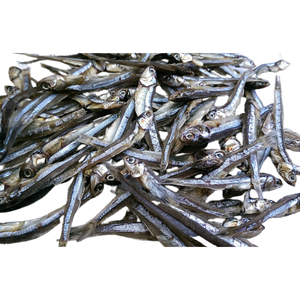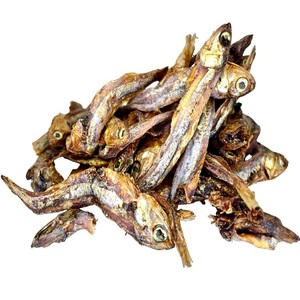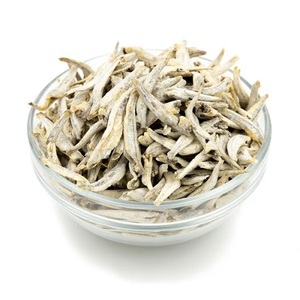(2031 products available)
























































![[QUALIFIED] <strong>Dried</strong> <strong>Anchovy</strong> Fish Best Price From Vietnam - Qualified With NAFI Certificate](http://s.alicdn.com/@sc04/kf/U0210dc3d82894175ac424410ef4b006et.jpg_300x300.jpg)
![[QUALIFIED] <strong>Dried</strong> <strong>Anchovy</strong> Fish Best Price From Vietnam - Qualified With NAFI Certificate](http://s.alicdn.com/@sc04/kf/Uc2ee8eba0e0144e895752daa23289472q.jpg_300x300.jpg)
![[QUALIFIED] <strong>Dried</strong> <strong>Anchovy</strong> Fish Best Price From Vietnam - Qualified With NAFI Certificate](http://s.alicdn.com/@sc04/kf/Uc8488064cc8443bea8c9802c4e126da9M.jpg_300x300.jpg)
![[QUALIFIED] <strong>Dried</strong> <strong>Anchovy</strong> Fish Best Price From Vietnam - Qualified With NAFI Certificate](http://s.alicdn.com/@sc04/kf/Uea283261074843a8a0ffeaa402a3afb90.jpg_300x300.jpg)
![[QUALIFIED] <strong>Dried</strong> <strong>Anchovy</strong> Fish Best Price From Vietnam - Qualified With NAFI Certificate](http://s.alicdn.com/@sc04/kf/U6f24bb3fcd9f4696b3a2751fffd3f914g.jpg_300x300.jpg)
![[QUALIFIED] <strong>Dried</strong> <strong>Anchovy</strong> Fish Best Price From Vietnam - Qualified With NAFI Certificate](http://s.alicdn.com/@sc04/kf/UTB8JwxAnnzIXKJkSafVq6yWgXXaQ.jpg_300x300.jpg)






























































































































Small Dried Anchovy
Small dried anchovy is particularly popular in Asian cooking because it is often called the “banchan” or side dish of choice. Small varities of fresh anchovy fish are cleaned and cooked before getting dried under the sun or using artificial means. They receive minimal preparation, thus retaining their strong, salty anchovy taste. Small dried anchovy fish are usually added whole to soups, stews, or stir-fried, bringing an umami taste to dishes.
Medium Dried Anchovy
Medium-sized dried anchovy fish are slightly larger, making them ideal for dishes where a stronger bite is required or where the anchovy needs to be more prominent as a protein source. Like smaller anchovy fish, they are also thoroughly cleaned, cooked, and dried to enhance their shelf life. Due to their size, medium dried anchovies are often used in dishes that require longer cooking times, which allow them to soften and integrate well into the meal.
Large Dried Anchovy
Large dried anchovy fish are suitable for customers who want to use anchovies as a key component due to their size and strong flavor. They could be ideal for seasoning, anchovy pastes, or sauces. The increased size also allows them to be stuffed or used whole in larger dishes, providing an intense anchovy flavor for wholesome and delicious meals.
Fresh Anchovy Fish
The main ingredient for making Japanese dried anchovy is fresh anchovy fish. These fish are found in saltwater all around the world, particularly in the Mediterranean and along the coasts of Asia. Fresh anchovies are small, slender fish that usually measure about 2 to 4 inches in length, though their size can vary depending on the specific type or region.
Salt
Salt plays a vital role in the preservation of anchovy fish during the drying process. It aids in pulling out moisture from within the fish, which helps prevent the growth of bacteria and keeps the fish from spoiling. Additionally, salt enhances the natural taste of anchovy fish, giving it the characteristic salty flavor that makes it a staple in different recipes. As with the original preparation of anchovies, the amount of salt used in the drying process should be carefully controlled to maintain the right balance of savoriness without making the fish too excessively salty.
Sunlight or Heat
Traditionally, anchovy fish were dried naturally under the sun to remove all the moisture from the fish. This method was commonly used in regions with warm and sunny weather, as it efficiently and slowly dried the fish while improving its flavor concentration. However, in more modern and less climate-dependent methods, the fish are usually dried using dehydrators or ovens, which provide more consistent drying conditions throughout the year. Although both methods result in dried anchovies, sun drying could give them a somewhat different texture and flavor compared to heat drying.
Low Moisture Content
The drying process of Chinese dried anchovy significantly reduces the moisture content level in the fish. With less water inside the fish, there is very little chance for bacteria such as yeast and mold to grow, which are the main causes of food spoilage. This makes dried anchovies very safe to eat over a long duration.
Salting and Drying
Anchovy fish that are salted before drying become even more durable and longer lasting. Salting conditions not only preserve the fish but also deepen the flavor. The salt does not only enhance taste but also acts as a preservative by creating an environment that is unfavorable to the growth of microorganisms that cause food spoilage.
Removal of Air
Anchovies that are dried have to be kept in airtight containers or sealed packs to avoid any rehydration or moisture absorption. If any air comes into contact with food, it might contain oxygen that will eventually lead to the spoiling of food through oxidation. Dried anchovies have a longer shelf life due to the elimination of air, which decreases the chances of oxidation occurring.
Proper Storage
Dried anchovies are always kept in cool and dry places, away from sunlight. Such conditions not only prevent the growth of microorganisms, but they also protect the nutritional content and natural taste of the fish. When exposed to heat and light, anchovy fish might lose nutrients or spoil faster.
Food Industry
The uses of Asian dried anchovy fish in the food industry are numerous and important. They are commonly used to produce broths and stocks for soups, stews, and sauces, providing a rich, umami depth that enhances other taste profiles. In Asian cuisine, dried anchovy fish are usually added whole to stir-fries, curries, and other dishes to introduce protein and savoriness. Furthermore, they are ground into powders or pastes that are used in marinades, seasoning blends, and food additives because of their nutrient density and long shelf life.
Animal Feed Industry
The anchovy fish may be small, but they pack a powerful nutrient punch and are often used in the animal feed industry. Dried anchovy fish that are ground into powder or meal are widely used to make high-protein feed for aquaculture, poultry, pigs, and other livestock. They contain lots of omega fatty acids, proteins, and essential minerals that improve animal health, encourage growth, and boost the production of eggs and meat.
Agriculture and Organic Fertilizers
The anchovies add a potent dose of nutrients, including nitrogen, phosphorus, and potassium, which are essential for plant growth. These nutrients are gradually released into the soil, providing sustained power to the plants as they grow. Dried anchovy fish are also used in compost piles, where they hasten decomposition and improve the nutrient content of the resulting compost.
Cosmetics and Health Products
Because of their nutrient-density and omega-3 fatty acid content, dried anchovies are sought in the cosmetics and health supplement products industry. Omega-3 fatty acids are extracted from anchovies to produce oils that are used in skin care products to nourish and hydrate skin. These oils are also used in dietary supplements to improve cardiovascular health, brain function, and overall wellness. Sustainability is another favorable point for anchovy fish; anchovy fish are generally smaller than other fish, which means they won't compete with larger fish for diets, so harvesting them won't hurt the balance of the marine ecosystem.
Freshness
Buyers should consider the freshness of the dried anchovy that has been properly dried and not left to dry for ages, as old anchovy fish may become excessively dry or develop mold, thus unsuitable for human consumption. That means they should buy from a reputable supplier who has built a name for themselves in selling high-quality products.
Appearance
Good quality, dried anchovy fish should have a consistent and normal shape, typically a slender and elongated form. The color of the fish should be pale to light brown and not black, which is a sign of burning or excessive drying. There should be no discoloration or mold as signs of spoilage, pinworms, or worms.
Aroma
High quality anchovy fish will smell like the ocean and fishy but not excessively so. If the fish smells bad, such as ammonia or rotten, they must be bad, fresh anchovy fish that are not fit for consumption.
Taste
Buyers are advised to conduct taste tests on small samples in order to check the saltiness and flavor profile. Dried anchovy fish that are balanced in salt don't require much skincare and only need a single, focus anchovy flavor with no bitterness or excessive saltiness.
Texture
When it comes to texture, anchovy fish should be firm and dry but not extremely brittle and prone to breaking. Well-prepared, dried anchovy fish is less likely to become significantly crushed when handled or cooked.
Size
Since anchovy fish usually come in different sizes, buyers should choose from small, medium, or large, depending on their personal needs. Small anchovy fish are suitable for seasoning or small dishes, while large ones are for stuffing or using them in larger dishes.
A1: In Korea, dried anchovies are known as myulchi and are often used to prepare myulchi-bokkeum, which is stir-fried anchovies with vegetables. They are also used to prepare a savory broach called anchovy broth, which adds umami to soups and stews.
A2: Yes, dried anchovies are very much suitable for customers who are on gluten-free diets. Because they are fish and do not contain gluten, they can be used to prepare a variety of dishes and snacks that suit gluten-free diets.
A3: Yes, opening the package exposes the fish to moisture and air, so it should be stored in an airtight container. Refrigeration prevents the fish from going stale and maintains its nutritional content.
A4: All the anchovy fish that are sourced from different ecosystems are suitable for drying. Nevertheless, the most commonly documented or widely known varieties are the Mediterranean anchovy and the Pacific anchovy, which are featured in numerous Asian and Mediterranean recipes that are available on the Internet.
A5: Dried anchovies do have high levels of salt, especially when they are used for seasoning or as a savory snack. It is crucial to check for anchovies labeled as "low sodium" if one is watching their salt intake.